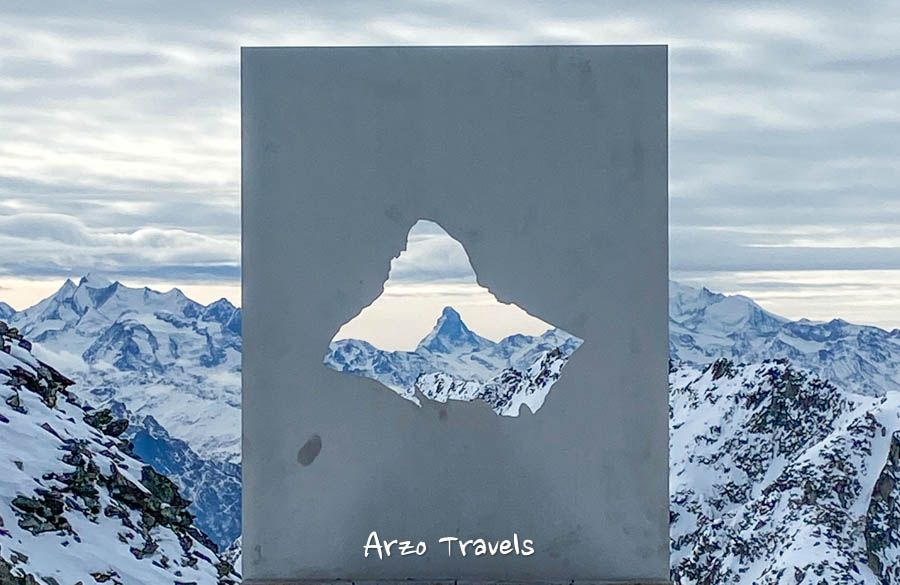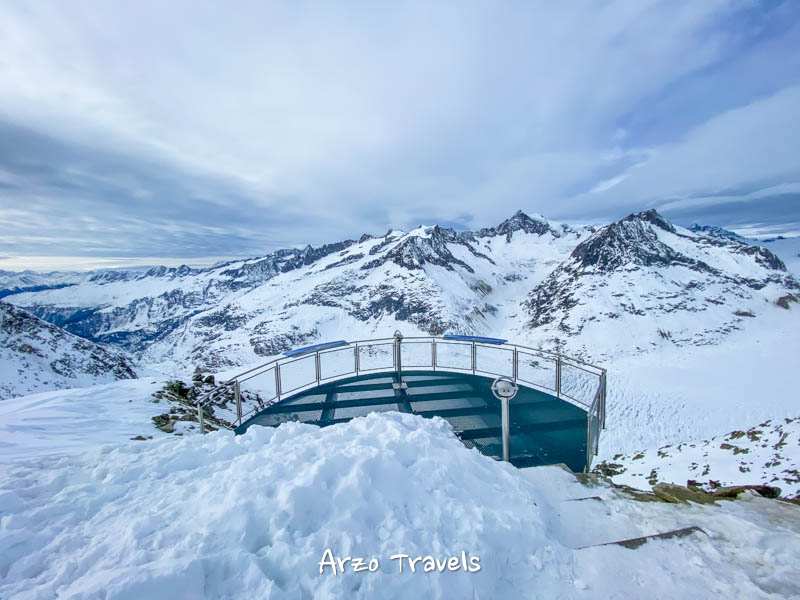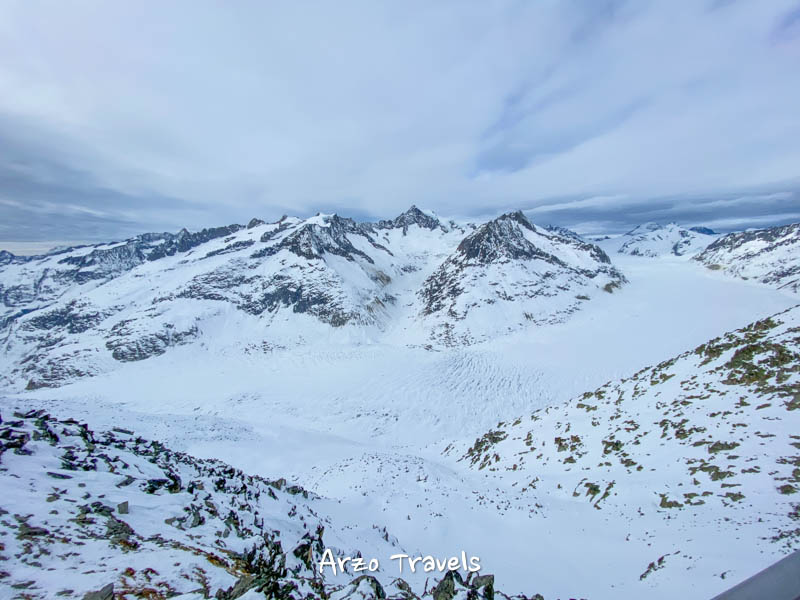HOW TO SEE THE ALETSCH GLACIER – THE LONGEST GLACIER IN EUROPE
It’s no secret that Switzerland is one of the most beautiful places in the world. With the jaw-dropping Alps, stunning Swiss lakes, immaculate waterfalls, and so many other incredible outdoor landscapes, it’s hard not to fall in love instantly with this majestic country. I fell in love with Switzerland and the more often I visit the country, the more I love it because there are so many gorgeous, fantastic places to visit in Switzerland.
One of them is the Aletsch Glacier! If there was ever a place that is going to leave you breathless, it’s definitely this one. Sitting high up in the imposing Bernese Alps, the Aletsch Glacier – the longest glacier in the Alps – it’s one of the most impressive places to visit in western Europe.
This post is all about the Aletsch Glacier – here’s everything you need to know about this incredible landmark.
Tip: Check out this epic five-day Switzerland itinerary to help you plan your trip.
Disclaimer: This post contains affiliate links. This means I might earn a small commission when you buy a product/service via my link (at no extra cost to you). More about it here
ALETSCH GLACIER GEOGRAPHY AND LOCATION
The Aletsch Glacier is the largest glacier in the Bernese Alps in south-central Switzerland. It’s set between the Swiss cantons of Valais and Bern. It also lies east of the Gemmi Pass in Valais. This glacier covers a total area of 66 square miles (171 square km) and is part of the Swiss Alps Jungfrau-Aletsch Unesco World Heritage area.
This not only makes it the longest glacier in Europe but also the largest in the western Eurasia region. The glacier has three main areas:
- Great Aletsch (main area)
- the Middle and
- Upper Aletsch.
The main glacier area is the longest and stretches a total of 14 miles (23 km) from Konkordiaplatz in the Jungfrau region down south to the Aletsch Forest. It then continues down to the Massa River — an extension of the Rhone River.
The middle glacier descends from the Aletschhorn peak and reaches the main glacier near Marjelen Lake just north of Eggishorn.
At its highest point on Upper Aletsch, the glacier reaches a staggering height of 13,648 feet (4,160 meters). Meanwhile, its lowest point reaches a height of 5,413 feet (1,650 meters).
GEOLOGY AND FORMATION OF THE GLACIER
The magnificent Aletsch Glacier is a product of the accumulation and compaction of snow and ice over thousands of years. Many people consider the Aletsch Glacier one of the finest natural landscape designers because it shaped much of the Aletsch Area around it. During the last Ice Age, mountains in the area (including the Bettmerhorn, Riederhorn, and Eggishorn) were completely covered in ice, with only their peaks rising above the ice.
During this time period, the Aletsch Glacier was much larger and extended all the way down to the Rhone River and Valley. Unfortunately, it has been a victim of climate change like many ice giants since its formation. Changes since 1860 show that the Aletsch Glacier was around 1.8 miles (3 km) longer and its edges were a little over 650 feet (200 meters) higher.
According to geological studies, the glacier has already lost 20% of its ice mass since 1860 and further continues to lose about 164 feet (50 meters) of its length each year. If this continues, glaciologists believe it will have lost 90% of its ice volume to climate change in 2100.
Today, three powerful firn streams make up the glacier, namely the Jungfraufrin, the Ewigschneefeld, and the Great Aletschfirn. The glacier has a thickness of 3000 feet (800 meters).
The Aletsch Glacier also has two medial moraines, with dark lines running the length of the glacier showing where the two tributary glaciers meet. The moraine on the right is the Kranzbergmittelmoräne, while the one on the left is the Trugberg.
FACTS ABOUT THE ALETSCH GLACIER
- It carries over 10 billion tonnes of ice from its northern slopes in Monch, Jungfrau, and Eiger down to Valais.
- The Aletsch Glacier is so heavy that if it were to melt, every person in the world would get one liter of water every day for three and a half years.
- If the glacier continues retreating at the rate it is now, it will lose half its volume by 2100
THINGS TO DO AROUND ALETSCH GLACIER
The Aletsch Glacier is an adventure-lover and adrenaline junkie’s wonderland. Naturally, skiing, snowboarding, sledding, and snowshoeing are all popular choices.
Best Views and View Points of Aletsch Glacier
There are a few places where you could get some pretty good views of the Aletsch Glacier. However, as expected, there are always a few places that stand out more than others. The following vantage points are where you’ll see the Aletsch Glacier in all its glory:
To enjoy the Aletsch Glacier the most, you have to look at it from above. And there are quite some places to enjoy some fantastic views of the Aletsch Glacier.
- Eggishorn
- Bettmerhorn
- Moosfluh
- Hohfluh
- Jungfraujoch
At Eggishorn, you can see the entire 20 kilometers of the Great Aletsch Glacier, as well as the Konkordiaplatz and the mountains of Eiger, Mönch, and Jungfrau. Here you also have the “Grand Tour of Switzerland” photo spot and it is the highest of the four viewpoints in Valais at 2869m above sea level.
The Bettmerhorn viewpoint (2647m above sea level) is located just 200 meters from Bettmerhorn mountain station. Here, you enjoy unobstructed views of the straight section and the big curve of the Great Aletsch Glacier.
At the Moosfluh viewpoint (2333 meters above sea level) you have views of the Aletsch Glacier all year round, which you can enjoy in the winter and summer.
At 2227 meters above sea level you have the Hohfluh vantage point also offers great views over the Great Aletsch Glacier in Valais – especially great to see the glacier’s curves.
Jungfraujoch (3,571 meters above sea level) is another top vantage point for the Aletsch – on the sites of Valais, it is normally not mentioned as a great Aletsch Glacier viewpoint. Why? The Jungfraujoch, a saddle connecting the two main mountains of the Jungfrau and the Mönch, is located in the canton of Bern. However, if you stand at the Sphinx Observatory you have some great views of the Aletsch Glacier. Check out my guide on getting to the Jungfraujoch, also known as the top of Europe.
Guided Tours on The Great Aletsch Glaciers
There are guided glacier tours you can take so you can safely explore the Great Aletsch Glacier with an experienced mountain guide. Guided glacier tours are available at Riederalp, Bettmeralp, and Fiesch-Eggishorn in the summer months.
There are different tours – starting from a 2-hour tour from Moosfloh station to a 2-day trip starting either at Jungfraujoch or Fiesch. You can book tours according to your interests and skills (no mountaineering experience necessarily required)- but regardless of which one you opt for, you should be/have: sure-footedness, 1 pole, trekking or hiking shoes (with a good grip), hat, jacket, sunglasses, gloves, packed lunch, and drinks; shorts are unsuitable on the glacier (wind)
Hiking & Trail Running
The Aletsch Arena boasts over 186 miles (300 km) of well-maintained and safe hiking trails with various degrees of difficulty. There are also five suspension bridges (e.g. Goms Bridge, Aspi-Titter, Belalp – Riederalp) in the area where you can take in the majestic views of the glacier around you.
The most challenging, yet invigorating hike is without a doubt the day hike from Fiescheralp to Bettmeralp. This 10-mile (17 km) hike takes around five to six hours. It heads north towards Eggishorn. Along the way, you’ll pass the Grosses Fiescherhorn, the second-largest glacier in the region. After passing many slopes and peaks you’ll eventually find yourself in Bettmeralp.
To take it up a notch you can also go trail running. There are an additional 44 miles (72 km) of dedicated trails for this activity. However, this can take up to an entire day so you need to be ready.
In winter, you have about 72 km of trails for winter trails – from easy trails (e.g.from Bettmeralp mountain station to Hotel Aletsch at Bettmeralp which takes about 2 hours) to more challenging ones (e.g. from Bettmeralp mountain station to Betten Dorf which takes about two hours).
Stay on the paths, as otherwise, you will sink deep into the snow (at least I sank into the snow until my knees more than once). Make sure to check out hiking paths before your trip as some might be closed.
Paragliding
If trekking your way through the mountains isn’t for you, why not give paragliding a try? You’ll get a bird’s eye view of the incredible Aletsch Glacier while gliding through the crisp fresh mountain air.
Mountain Biking
Another adrenaline-pumped activity that you can look forward to in the Aletsch Arena is mountain biking. With 62 miles (100 km) of track, you’ll be out in the open with nothing but the Aletsch Glacier surrounding you.
Golf
Ever fancied taking a swing in the Alps? You can do exactly that in the Aletsch Arena itself. And what better way is there to hit a hole-in-one than with the gorgeous Aletsch Glacier in the background?
The Riederalp Golf Club is the highest-altitude golf course in the area. It sits over 6,500 feet (2,000 meters) above sea level and offers picturesque views of the Aletsch Glacier all around you.
Winter Sports
The Aletsch Arena is also one of the top places for winter sports in Switzerland. Whether you want to go skiing (including night skiing), or snowboarding – there are 104 km (65 miles) of well-prepared pistes that are ideal for any winter sports enthusiasts.
FINAL THOUGHTS ON A DAY TRIP TO ALETSCH GLACIER
I have seen the Aletsch Glacier from different viewpoints and was speechless – its beauty is impressive. Knowing it is the longest glacier in Europe makes the glacier only even more special. And beautiful glaciers, like this or the Moiry Glacier or the Glacier 3000, are going to be victims of climate change – thus, I am well aware of how special it is.
While visiting the Aletsch Glacier does probably no good for the climate in itself, it might remind us to be – even though we visit – more careful of our environment.













